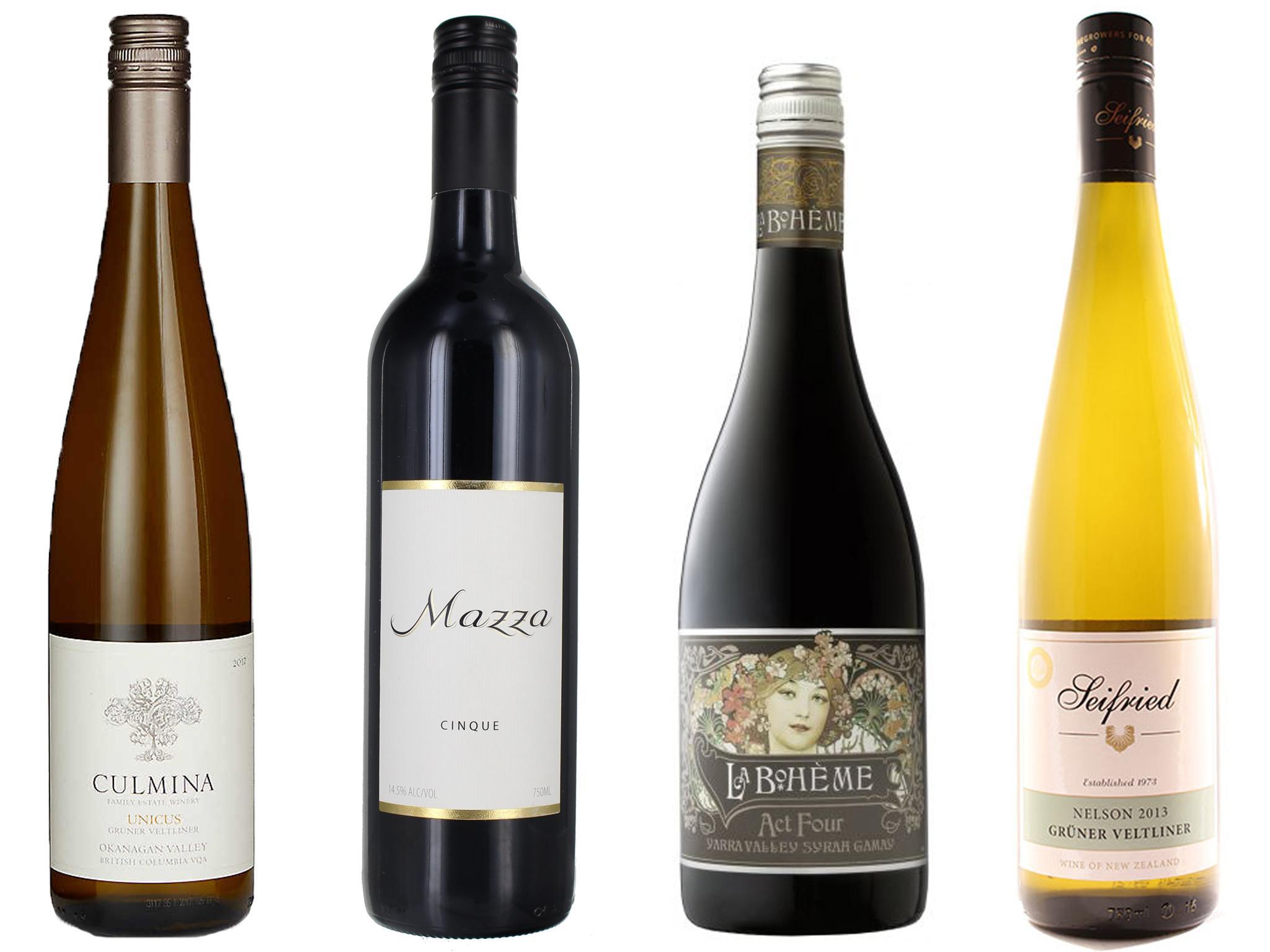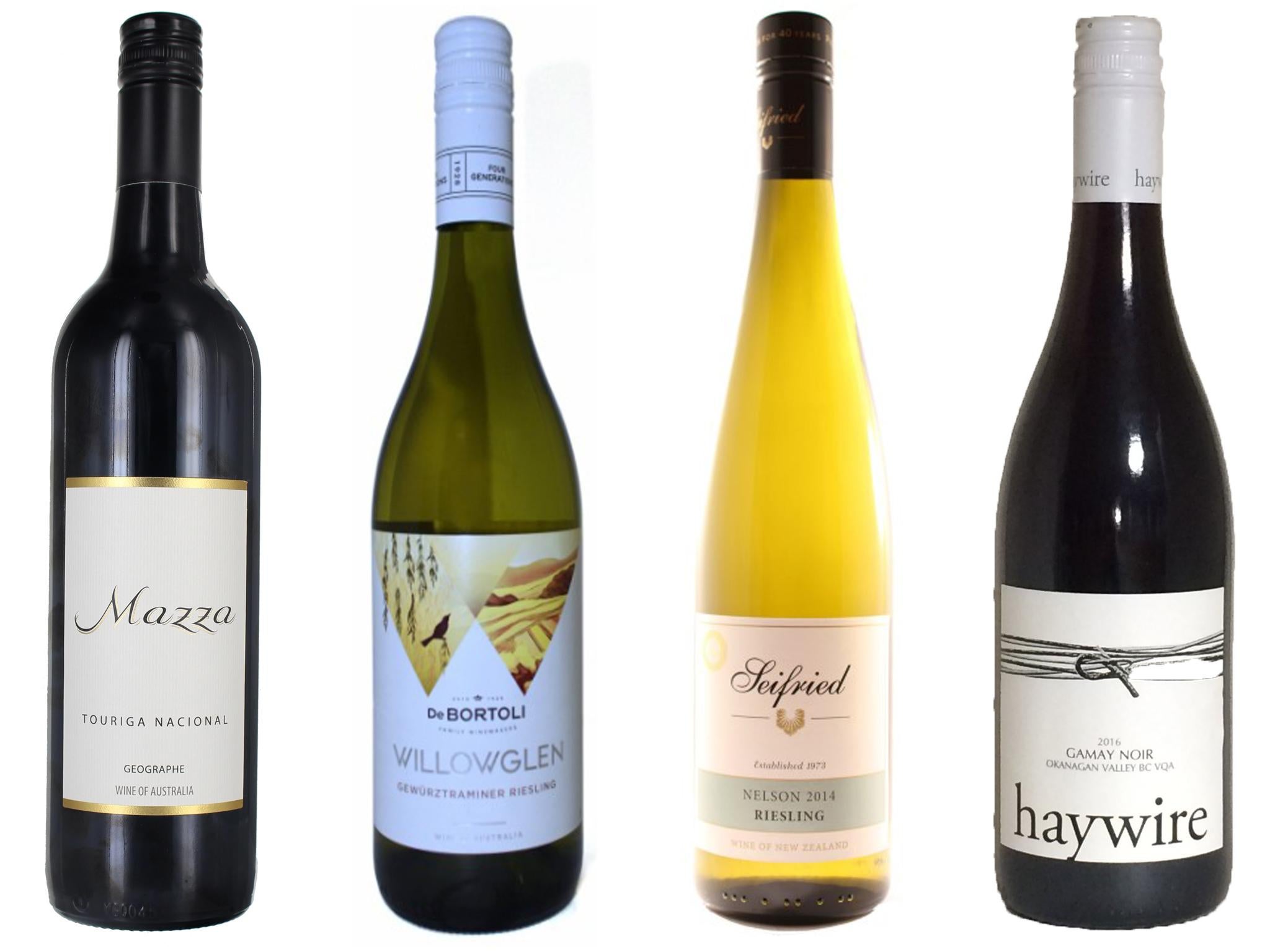Wines of the week: 9 New World wines using Old World grapes
Producers in Canada, Australia, New Zealand are using their climate and soils to work wonders with less ubiquitous European grapes, says Terry Kirby

Your support helps us to tell the story
From reproductive rights to climate change to Big Tech, The Independent is on the ground when the story is developing. Whether it's investigating the financials of Elon Musk's pro-Trump PAC or producing our latest documentary, 'The A Word', which shines a light on the American women fighting for reproductive rights, we know how important it is to parse out the facts from the messaging.
At such a critical moment in US history, we need reporters on the ground. Your donation allows us to keep sending journalists to speak to both sides of the story.
The Independent is trusted by Americans across the entire political spectrum. And unlike many other quality news outlets, we choose not to lock Americans out of our reporting and analysis with paywalls. We believe quality journalism should be available to everyone, paid for by those who can afford it.
Your support makes all the difference.We know well how, in the last few decades, the New World has taken staple European – mostly French grapes – and reinvented them with spectacular results: there must be scarcely anybody who loves wine who has not at some point enjoyed an Australian chardonnay or shiraz, a New Zealand sauvignon blanc or an Argentine malbec.
Partially this is to do with the geographical adaptability of these grapes – certainly of the first two, whose ubiquity is such that they are known as the “international” varieties, alongside other staples such as cabernet sauvignon.
But across the New World, there are winemakers creating excellent and exciting wines from other European grapes. In the Geographe region, south of Perth in Western Australia, Anna and David Mazza specialise in making small batches of wines based on their favourite varieties from Spain and Portugal, like tempranillo but also including relative unknowns such as the port grape bastado, that both pay respectful homage to their origins, but also add a little something else.
My favourite is the Mazza Touriga Nacional 2016 (£24.95, jeroboams.co.uk) which turns the port staple into a full bodied, rich, elegantly structured beast of a wine, with immense presence and character – a wine to be savoured with rare red meats or casseroles.
The slightly more affordable Mazza Cinque 2010 (£15.95, jeroboams.co.uk) has TN among a blend of five varietals, including tempranillo and another lesser known Portuguese variety, sousao, that work together harmoniously and create something which is more than the sum of its parts: complex, concentrated and balanced. Delightful and careful winemaking.
A couple of weeks ago, I recommended the excellent, juicy, black cherry-flavoured Te Mata Estate Gamay Noir 2018 (£13.50, thewinesociety.com; £19.20 thenewzealandcellar.co.uk), a rare example of the staple grape of Beaujolais getting an outing outside that that region. But in the La Boheme Act Four Yarra Valley Syrah Gamay (£13.59, mitchellswine.co.uk; £14.88, richardgrangerwines.co.uk) – something of a tribute to Dame Nellie Melba, the legendary Aussie opera singer from the Yarra Valley in Victoria – the succulent, toothsome gamay provides appropriately lighter, tenor notes to balance the powerful bass voice of the syrah, with harmonious effect, creating an accessibly fresh, juicy, fruit packed, spicy wine; for a posher kind of barbecue.

Even more unusual is the Okanagen Crush Pad Haywire White Label Gamay (£23.99, appellationnation.co.uk; £24.99, novelwines.co.uk), made in Canada’s main wine region of the Okanagan Valley in British Colombia, with grapes grown organically on alluvial and limestone soils, fermented in concrete and aged in concrete eggs (it’s a thing now – but that’s for another column…), although the result is actually closer to lighter Beaujolais: big red fruit flavours, hints of spice, smooth and velvety tannins; a lovely wine for charcuterie, softer cheeses or a roast chicken.
Staying in the Okanagan, the Culmina Unicus Gruner Veltliner 2017 (£23.99, selfridges.com) is the region’s first attempt at GV, the currently fashionable Austrian grape, with its enticing combination of aromatic grapefruit and white pepper flavours: this one adds flavours of banana and pear, with a long finish. Quite extraordinarily good.
In the Nelson region of New Zealand, the Austrian origins of Hermann Seifreid led to his family company to making gruner veltliner as well as wines from other grapes from the central European region – riesling, gewurztraminer and pinot gris – so the Seifreid Estate Nelson Gruner Veltliner 2016 (£14.49, flagshipwines.co.uk; £14.90, thenewzealandcellar.co.uk) is about as true to its origins as it can be, with splash of Kiwi zest to give it some extra vivacity. A wine for all kinds of substantial fish dishes as well as lightly spiced Asian foods. The Seifried Estate Nelson Riesling 2014 (£14.49, flagshipwines.co.uk) is also exceptionally good, with bracing minerality offset by juicy tropical fruits.
Kiwi and Aussie riesling is generally well known, but Alsatian style blends of riesling and gewurztraminer are less common. The De Bortoli Willowglen Gewurztraminer/Riesling 2018 (£8.30, fieldandfawcett.co.uk) manages to combine the subtle sweetness from both grapes with the spiciness of the former and the minerality of the latter to winning effect. A lovely wine to match the sweetness of both belly pork and dessert dishes…
Join our commenting forum
Join thought-provoking conversations, follow other Independent readers and see their replies
Comments